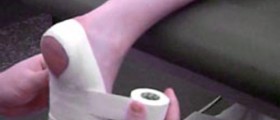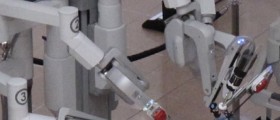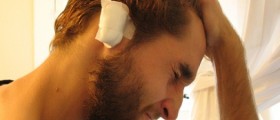Heel Spur
The problem called heel spur can be treated with a certain surgery, but this surgery is done usually as a last resort. When the problem is detected, many treatments are done before the surgery. Only if they bring no results, the surgery is done. This problem can sometimes create very serious and even unbearable pain. We will focus on the surgery, which usually eliminates the pain, but there are some side effects involved.
The Surgery for Heel Spur
The procedure of heel spur surgery can be done in several manners. The first one is endoscopic plantar fasciotomy, which will remove the pain. When this procedure is done, a patient will suffer two slits that will be made around the heel. A small camera will pass through these two slits and bring the picture to the monitor. In this way, the doctor will be aware of the exact conditions of the problem.

When the doctor detects the problem, he will cut or detach the plantar fascia ligament using a small knife which will reduce the pain and stress. By doing this, a space that was created will help the development of the fascia tissue. During this surgery, the elimination of heel spur or plantar fasciitis is created due to the elimination of tension, which caused the problem in the first place.
In other surgeries that are performed when a heel spur is present, the entire plantar fascia can sometimes be cut out. During this procedure, which many consider inferior when compared to endoscopic plantar fasciotomy, the doctor cuts out just a small portion and not the entire plantar ligament.
There are many possible treatments and surgeries, so you should discuss them with your doctor before you decide what to do. They can sometimes be removed. For this procedure, the doctor will also use a camera and small instruments that will help in the removal of bony fragments of calcium. When this procedure is done, the pain will surely be decreased, since the tissue surrounding the heel cannot be damaged anymore by the bone fragment.
As we have said, surgery is the last resort. The treatments, other than surgery, usually prove successful if the problem is detected in the early stages, and treated, of course. The problem will become more serious and greater if the treatment is not performed. The surgery will limit the weight bearing for some time.
Another side effect of this operation is nerve tissue damage. The pain will not be eliminated sometimes, but this side effect occurs rarely. Ill-fitting shoes, obesity, sudden weight gain, overuse, and excessive stress on the feet are some of the causes, which can easily be avoided, and the heel spurs along with them.
- The typical symptoms of patients with plantar heel pain include tenderness from the medial band of the plantar fascia to the medial calcaneal tuberosity, which is aggravated with physical activity and seriously affects the quality of life and walking ability of the patients. The treatment for plantar heel pain varies due to the diverse etiologies and unknown pathogenesis of the disease. There are multiple theories for its pathogenesis.
- This study retrospectively analyzed the clinical data of 32 patients with chronic plantar heel pain who underwent surgery at the Department of Orthopedics, Yubei District People's Hospital of Chongqing, China from January 2019 to August 2021 and had complete follow-up data.
- All patients had unilateral heel pain and were treated with arthroscopy-assisted calcaneal spur resection and plantar fascia release. The visual analogue scale (VAS) and the American Orthopedic Foot and Ankle Society (AOFAS) scores were used to evaluate the pain and function, respectively, of patients before and 1, 2, 3, 6, and 12 months after the surgery.
- The perioperative complications were also recorded. All 32 patients underwent successful surgery, with follow-up for 12–18 months (mean: 15.6 months). The VAS score was significantly decreased from 6.81 ± 0.90 preoperatively to 4.50 ± 1.14 at 2 months postoperatively. The AOFAS score was significantly increased from 62.53 ± 5.73 preoperatively to 71.16 ± 5.74 at 2 months postoperatively (p
- Arthroscopy-assisted calcaneal spur resection combined with plantar fascia release achieves rapid relief of postoperative pain and recovery of foot function for the treatment of plantar heel pain. This minimally invasive surgery achieved satisfactory outcomes and is feasible for the treatment of plantar heel pain.















-Arthritis_f_280x120.jpg)

Your thoughts on this
Loading...